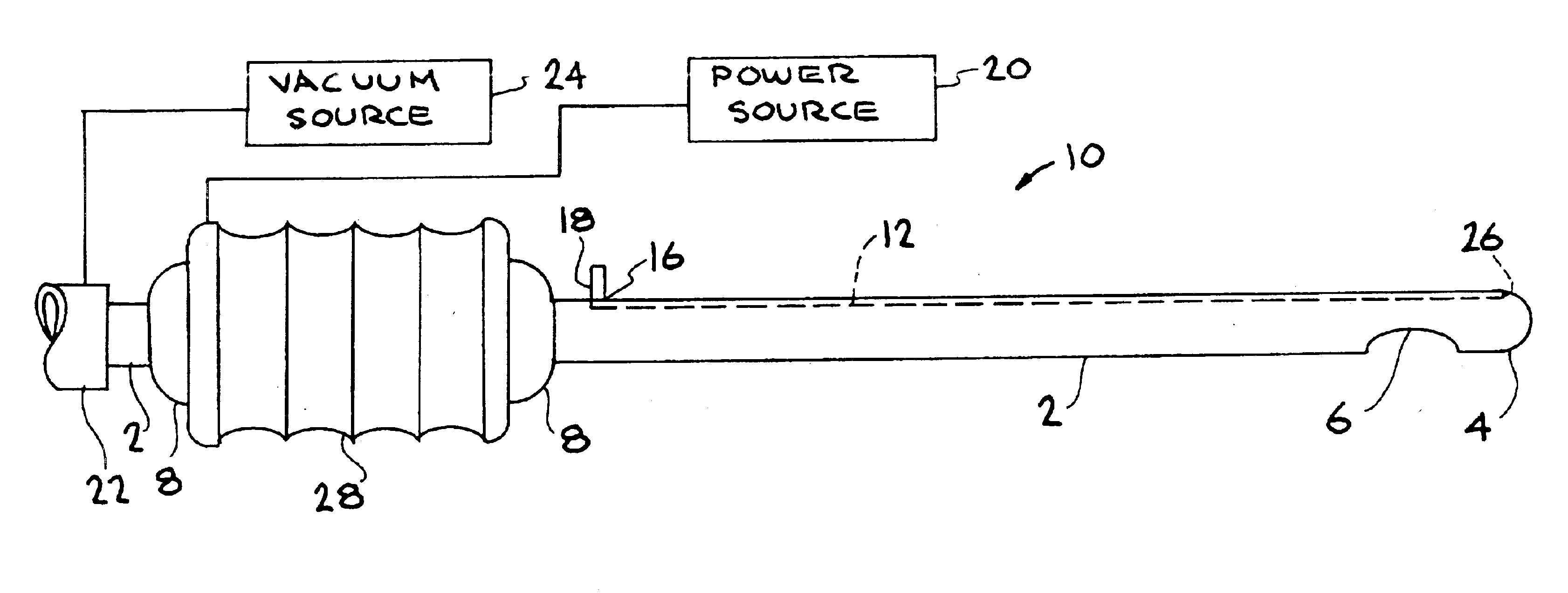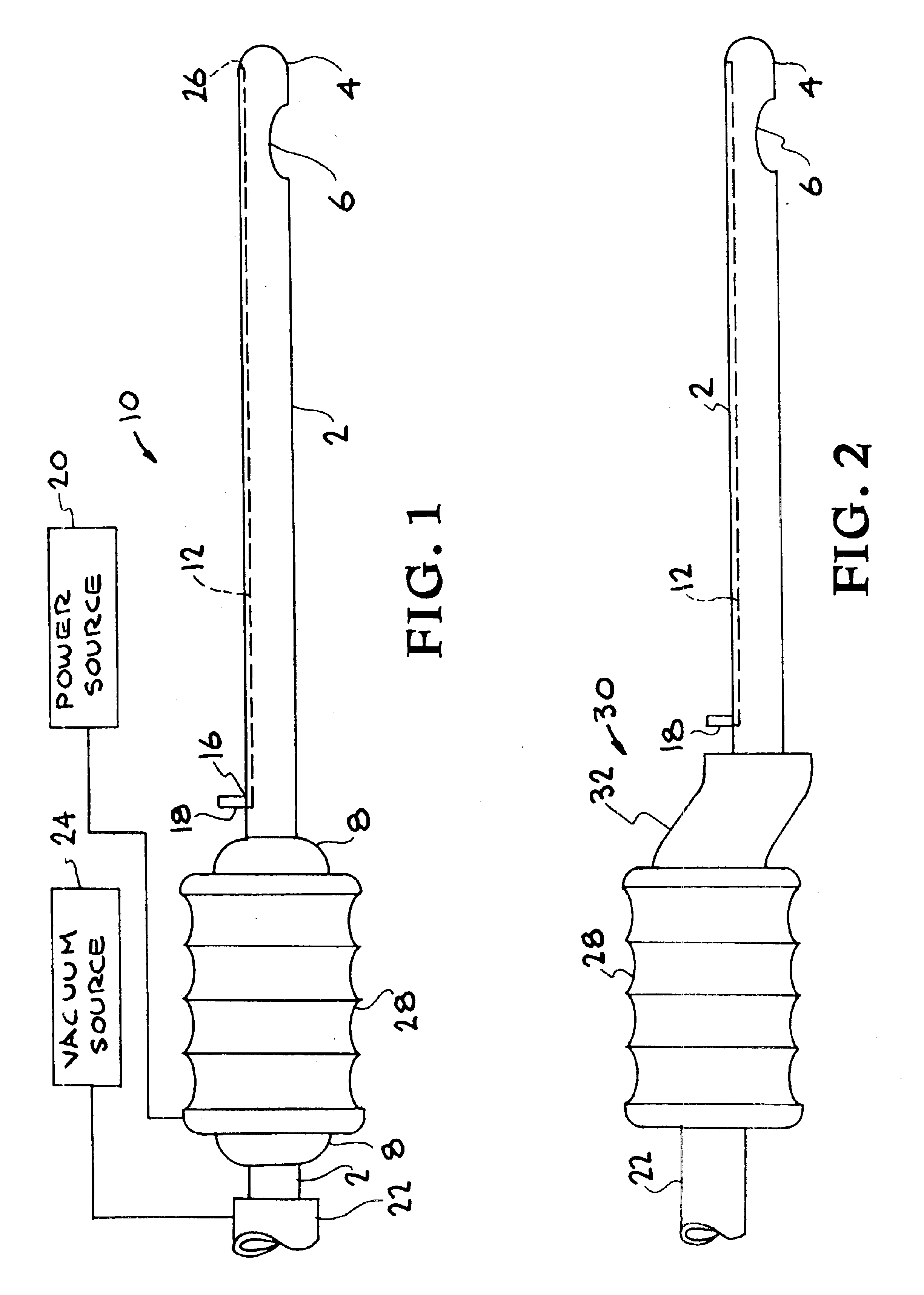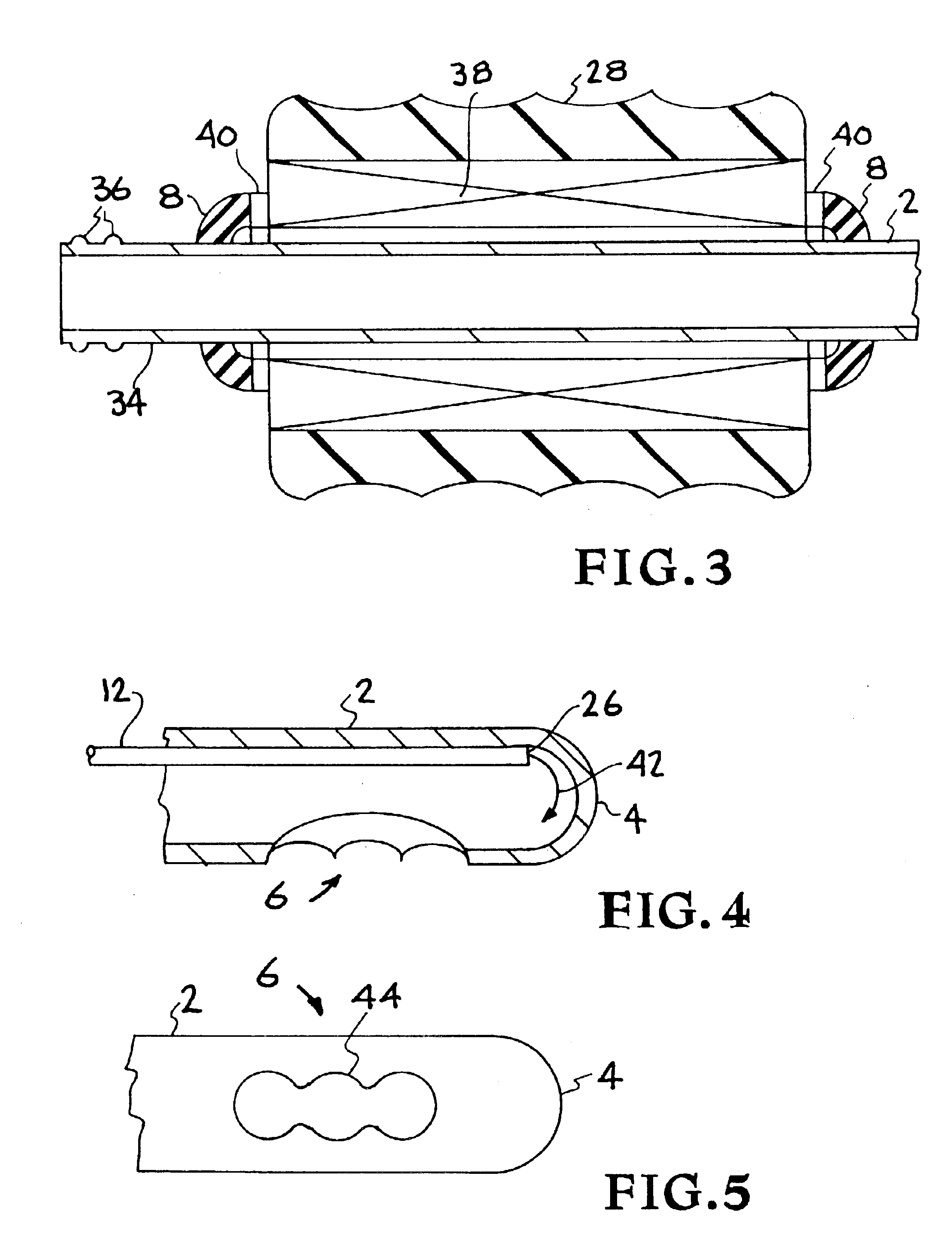Liposuction cannula device and method
a cannula and liposuction technology, applied in the field of liposuction apparatus and method, can solve the problems of reducing the reproducibility of the result between the patient's right and left sides, less than optimal, and excessive time for liposuction, and achieve the effect of reducing the total energy
- Summary
- Abstract
- Description
- Claims
- Application Information
AI Technical Summary
Benefits of technology
Problems solved by technology
Method used
Image
Examples
Embodiment Construction
The present invention is directed to a reciprocating liposuction cannula apparatus or device which utilizes a single cutting shaft, may utilize a combination of reciprocating energy and ultrasonic energy, and may utilize available excess (over that required for suction) vacuum (negative pressure) capacity to produce the reciprocation of the cannula shaft, One embodiment of this invention uses a single shaft for cutting, preferably in a non-rectilinear oscillation motion. An additional lumen may be utilized for cooling of the cannula tip, equilibrating the pressure, or providing additional pressure to allow fat to move back up the cannula shaft with greater ease. The combination of reciprocating energy and ultrasonic energy reduces the total energy of each type. Also, in this non-rectilinear reciprocating form of the cannula device, no protective measures (monitoring tip impact) need be taken in order to prevent the device from battering through important organs.
The combination of ul...
PUM
 Login to View More
Login to View More Abstract
Description
Claims
Application Information
 Login to View More
Login to View More - R&D
- Intellectual Property
- Life Sciences
- Materials
- Tech Scout
- Unparalleled Data Quality
- Higher Quality Content
- 60% Fewer Hallucinations
Browse by: Latest US Patents, China's latest patents, Technical Efficacy Thesaurus, Application Domain, Technology Topic, Popular Technical Reports.
© 2025 PatSnap. All rights reserved.Legal|Privacy policy|Modern Slavery Act Transparency Statement|Sitemap|About US| Contact US: help@patsnap.com



